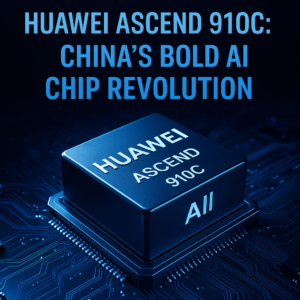The Rise of Nvidia: A New Era in AI-Centric Semiconductor Leadership
Nvidia’s ascent to replace Intel on the Dow Jones Industrial Average marks a significant shift in the semiconductor industry, reflecting the growing dominance of AI technologies. This change highlights Nvidia’s pivotal role in powering AI systems, setting the stage for a future driven by artificial intelligence innovation.
The tech landscape is experiencing a seismic shift as Nvidia steps into the spotlight, replacing Intel on the illustrious Dow Jones Industrial Average. This change, effective November 7, 2024, signifies not just a change in representation on a financial index, but also encapsulates the evolution of the semiconductor industry, particularly in the realm of artificial intelligence (AI).
For over 25 years, Intel, known as a pioneer in the semiconductor field, held a prominent position within the Dow. However, as the demand for AI technologies has surged, Nvidia has emerged as the dominant force in the chip market. Their specialized graphics processing units (GPUs) have become essential for developing and running AI systems, enabling tasks ranging from machine learning to complex neural network computations. This transition highlights a broader trend:
- The increasing importance of AI capabilities in driving technological advancements and industry growth.
Nvidia’s journey to the forefront of AI innovation began with its commitment to developing GPUs that are not only powerful but also optimized for AI applications. Their architecture allows for parallel processing, which is critical for handling the massive datasets and complex algorithms that AI systems require. This focus has allowed Nvidia to capture significant market share, especially as industries such as healthcare, finance, and automotive increasingly rely on AI-driven solutions.
The replacement of Intel by Nvidia on the Dow is also a reflection of changing investor sentiments. As AI continues to permeate various sectors, companies that prioritize AI technology are likely to attract more investment and attention. Nvidia’s market capitalization and revenue growth are testaments to this shift, as they consistently break records due to the rising demand for their AI-related products.
Furthermore, this transition may prompt other semiconductor companies to reevaluate their strategies. Companies that have long depended on traditional computing paradigms might find themselves at a disadvantage unless they pivot towards AI-centric innovations. This could lead to a period of rapid transformation within the semiconductor industry, where agility and foresight will be paramount.
In addition to Nvidia’s rise, the Dow’s changes also include the replacement of Dow Inc. by Sherwin-Williams, signifying a broader realignment of industries represented on the index. This reflects a market increasingly focused on sectors that promise growth and relevance in a rapidly evolving economy.
As we look ahead, the implications of Nvidia’s ascendance are profound. It serves as a reminder of the importance of adaptability in technology. In an era where AI is not just a buzzword but a transformative force across industries, Nvidia’s leadership symbolizes a new chapter in the semiconductor saga—one where the future is driven by artificial intelligence and the relentless pursuit of innovation.
In conclusion, Nvidia’s elevation to the Dow Jones Industrial Average is not merely a financial maneuver; it is a harbinger of a future where AI technologies dominate and define the technological landscape. The era of AI is here, and Nvidia is poised to lead the charge.


